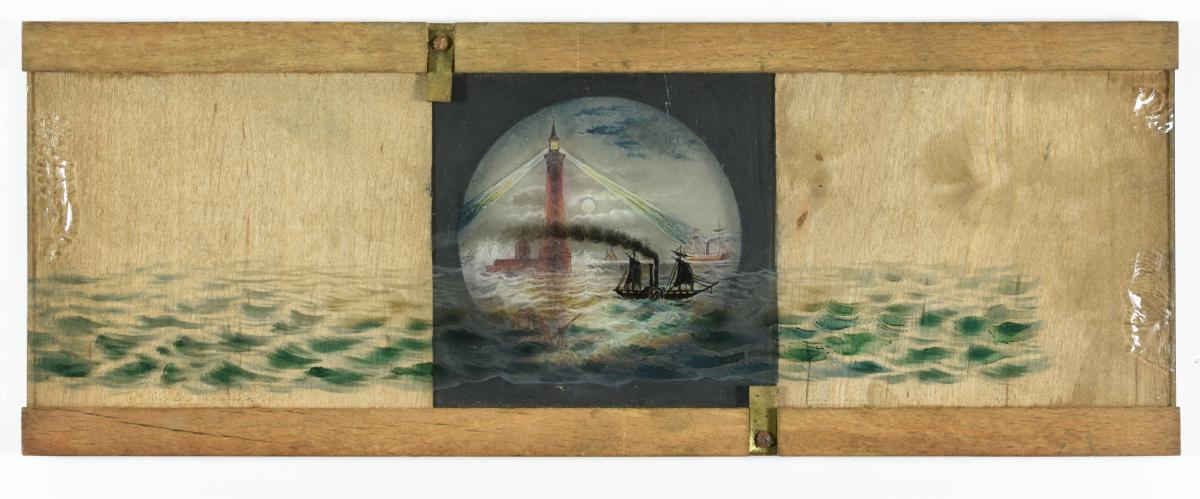
Lantern slides are photographic, painted, or printed images on glass that were viewed by projection using a Magic Lantern. The Magic Lantern is a box with a slot for the slides, lenses for enlarging the image, and a light source. The earliest versions from the 17th century used a candle. The Magic Lantern was used for public entertainment and traveling entertainers who developed shows that incorporated live music and storytelling that corresponded with projected images. Slides with rotating illustrations or sandwiched sliding glass parts with painted masked areas were used to create images with motion. One slide at Hagley has a tiger face consisting of three plates. One plate has the face, one the eyes, and another has the bottom jaw and teeth. The parts can be shifted to make the tiger’s eyes and mouth move.
Photographs on glass were used to convey scientific knowledge and to teach different subjects to groups. Some slides in Hagley’s collection include images of butterflies, animals of the Philadelphia Zoo, and biblical stories. Others are merely for entertainment, such as those with painted characters.
The Library has numerous lantern slides in the collections, but there are few as intricate and artful as these painted glass scenes. Each one has two pieces of glass. One containing the background scene, and one with the mobile part that slides. For instance, one shows a lighthouse and coastal scene on the background slide with a ship and waves that can be transported across the scene. They come from a large group of lantern slides that includes a variety of subjects. It seems they had been stored in a shed or barn because the collection was covered in grime and dried mold residues.
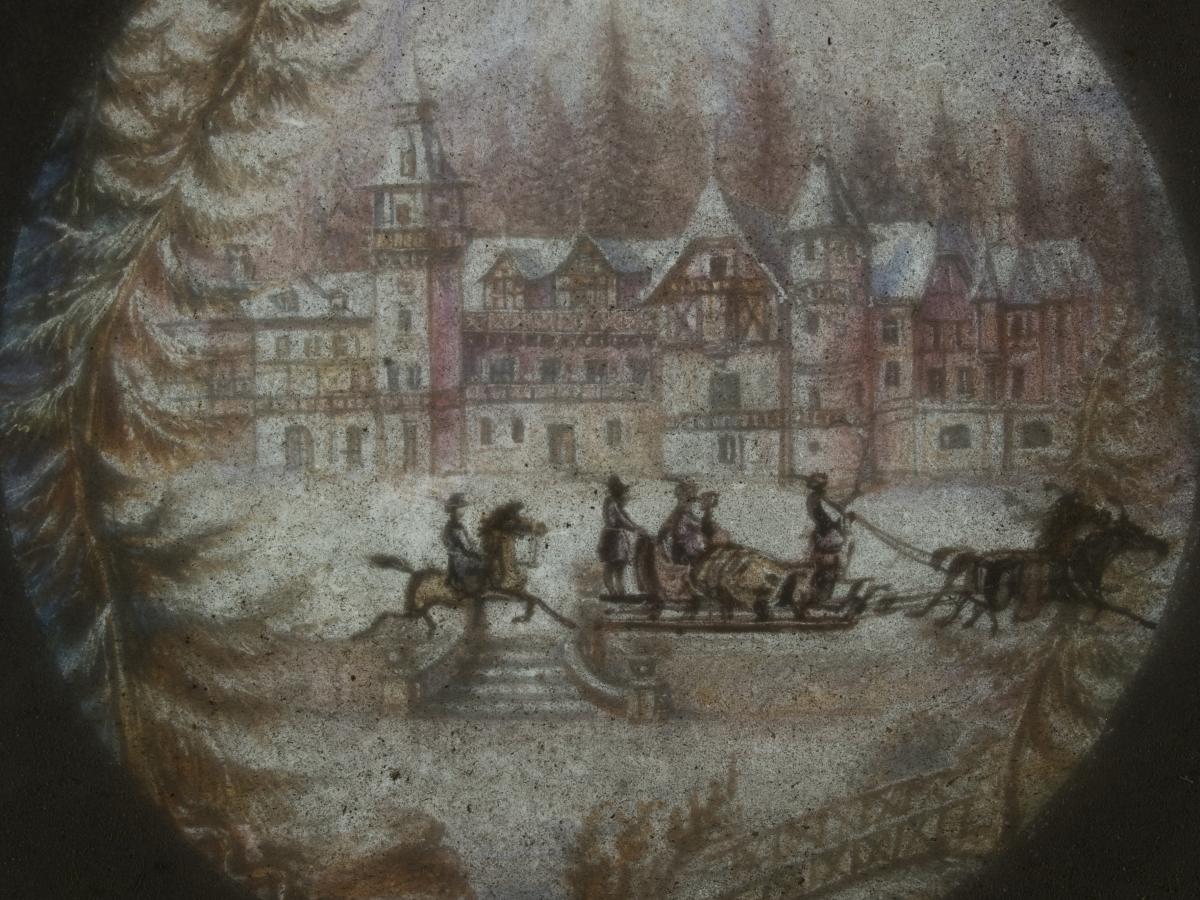
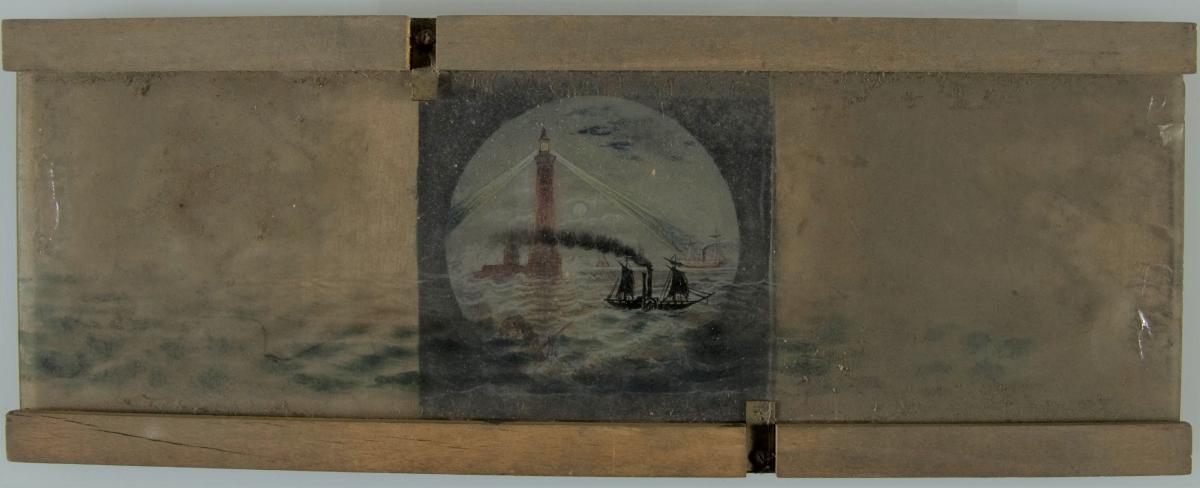
(see after-treatment slide at the top of the page)
In addition, the glass supports were suffering from glass deterioration. This is a problem in which components of the glass (alkali salts) migrate out because they are hygroscopic (absorb moisture). The salts then recrystallize on the surface. In ancient glass, the salts eventually elevate the pH of the surface of the glass so much that it becomes hazy, then pitted, and eventually loses physical integrity. The unstable environment where these slides were kept, with wide fluctuations in humidity, exacerbated the deterioration. In this case, the salts posed a major threat to the integrity of the painting. They were emerging from the glass, and erupting through the paint layer, causing cracks and lifting the paint.
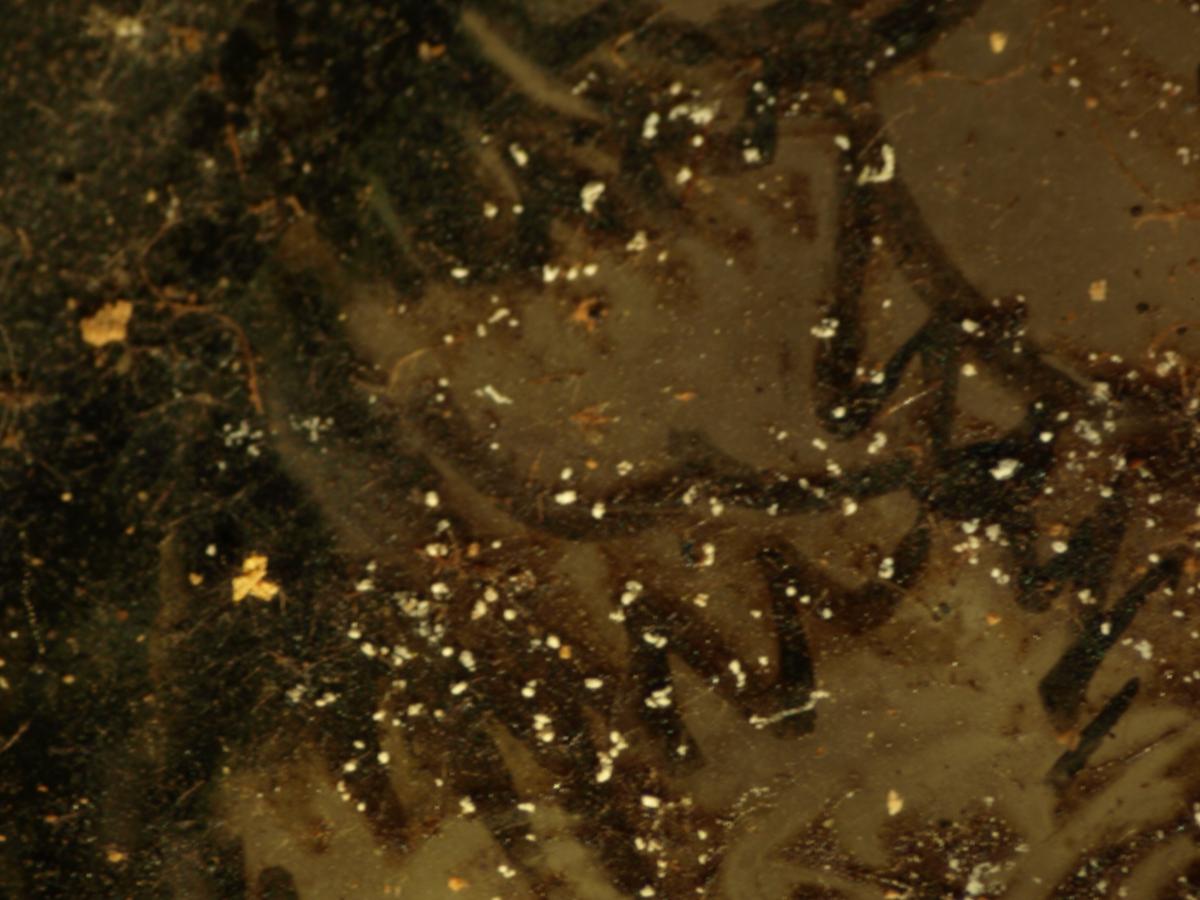
When I examined them using our microscope, I gained a greater appreciation for the fine brush strokes that produced such detail on a minute scale. I was also alarmed at the flaking paint and the layer of dust and detritus on the surface. This would have to be carefully removed, at least as much as possible, before we could apply a consolidating adhesive to keep the flaking paint intact. The choice of surface cleaning method had to be delicate, and the process had to be deliberate.
Emma Gunuey, our intern, did a fabulous job surface cleaning and rehousing this group. Prior to approaching the painted surface, she cleaned the wooden frame housing with a foam cosmetic sponge. These are great for picking up fine sooty dust. The unpainted portions of the glass were cleaned with a mixture of water and alcohol. Emma worked hard to remove the hazy grime from clear glass areas while avoiding the painted image areas.
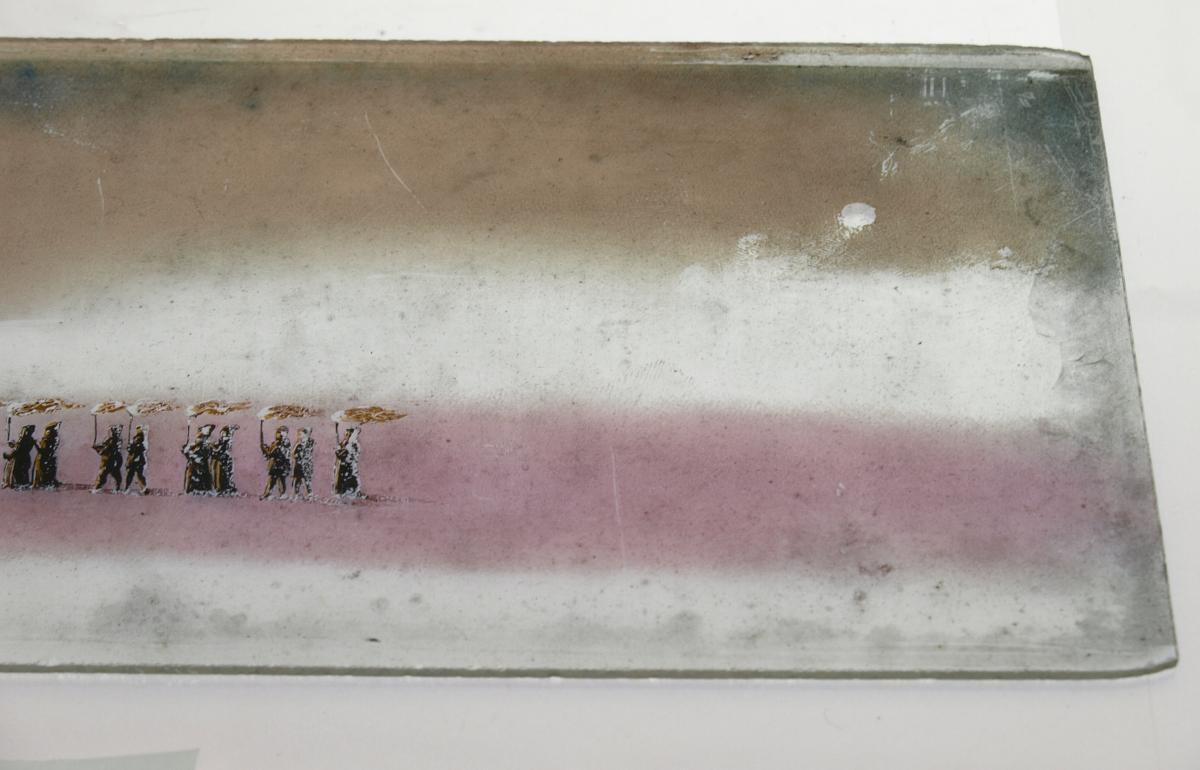
The right edge of the glass is chipped and there are scratches in the airbrushed pink and tan areas.
Loose bits of dirt on the paint surface were then picked up with a bit of kneaded rubber eraser on a skewer. Next, loose wood fibers were picked up with the touch of a tiny dry watercolor brush. This was all done with the aid of the microscope.
Unfortunately, the history of who made these slides is a mystery, because they lack any identifying labels.
The cleaned slides now allow appreciation of the painting beneath! The tale of paint consolidation will be told in the next newsletter.
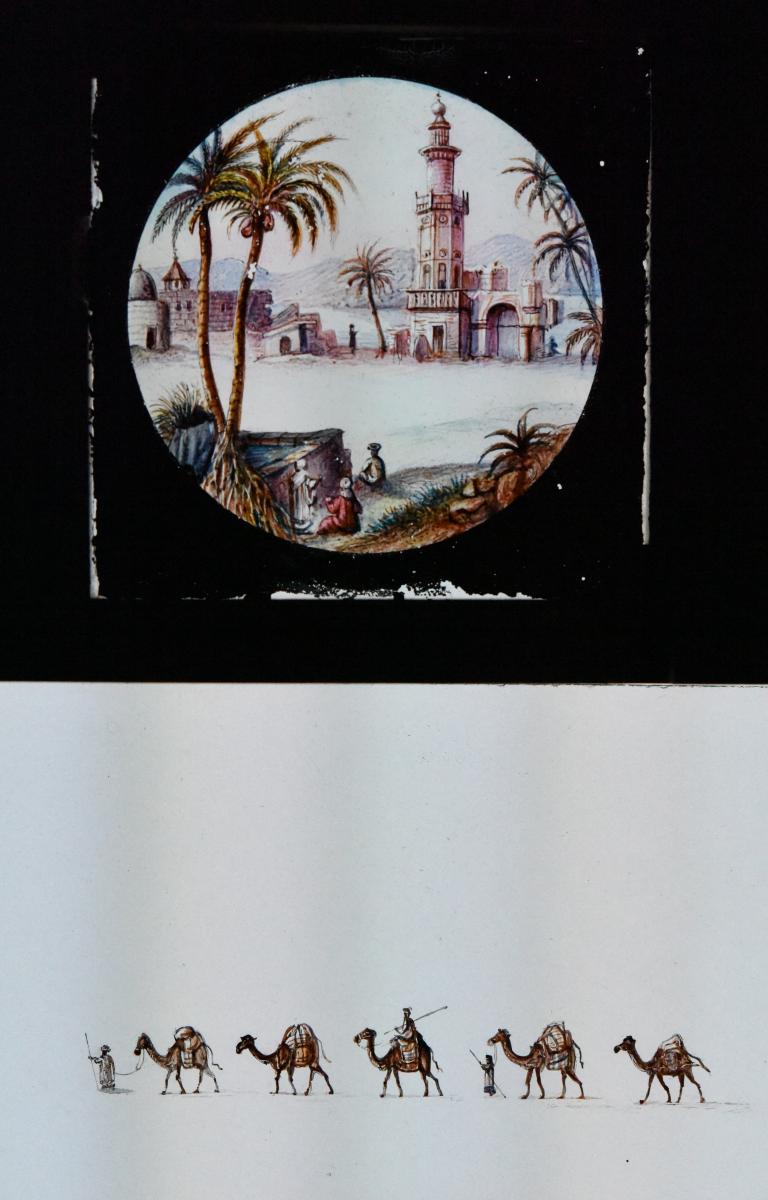
Laura Wahl is the Library Conservator at Hagley Museum and Library.
